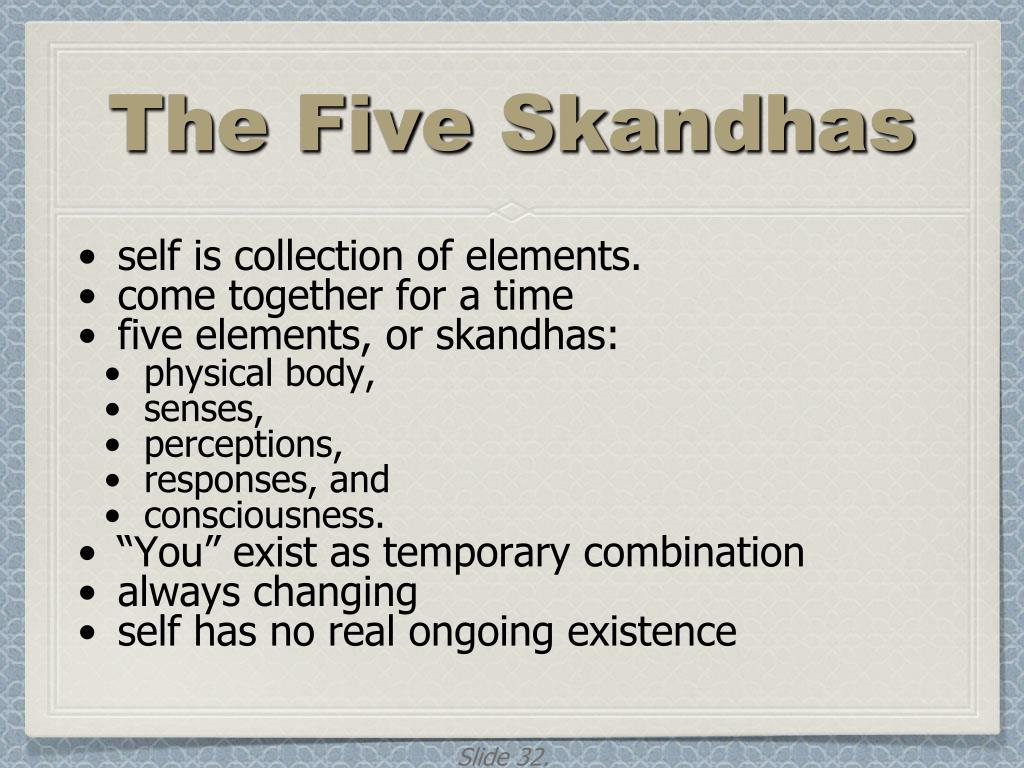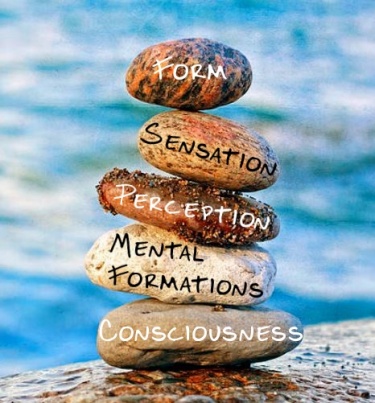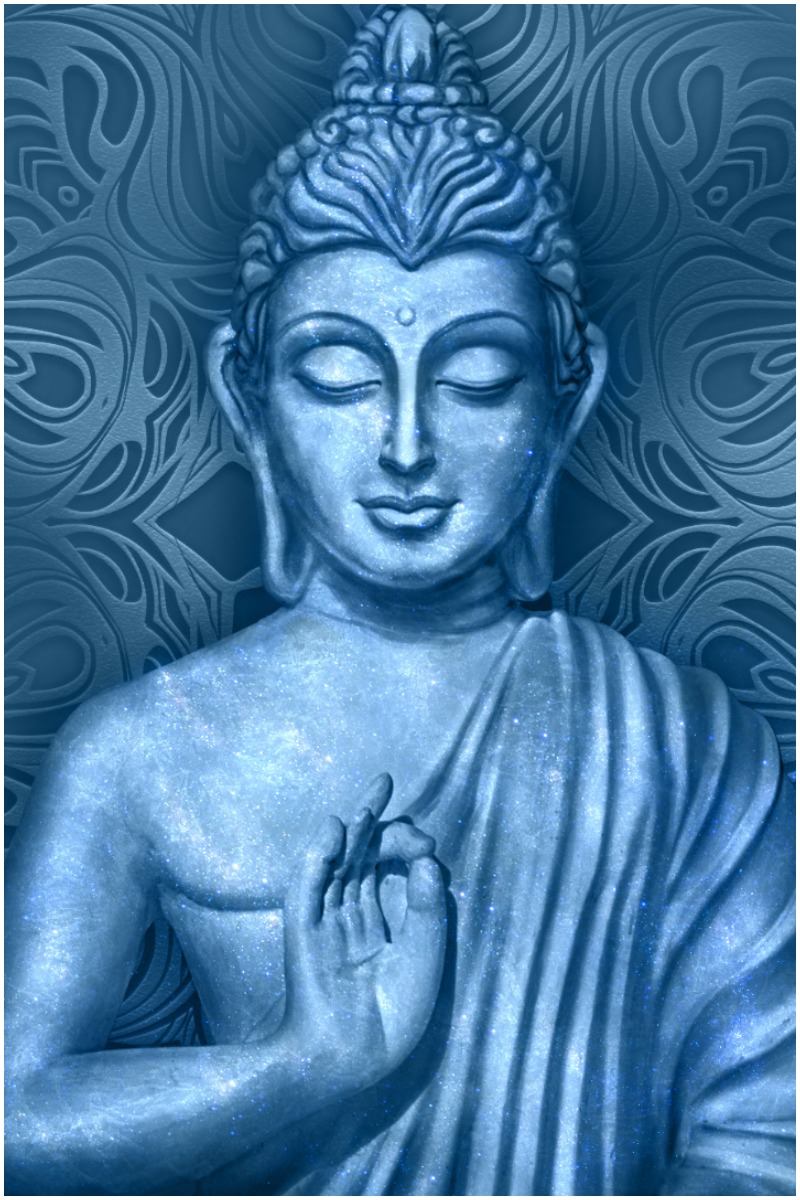The five skandhas are a fundamental concept in Buddhism. They refer to the five components that make up a human being. These five components are form, sensation, perception, mental formations and consciousness. According to Buddhism, it is these five skandhas that give rise to the illusion of an individual self. In other words, there is no such thing as a self that exists independently of these five components.
Form
The first skandha, form, refers to the physical body. According to Buddhism, the body is made up of various elements, such as earth, water, fire and air. These elements combine to create the physical form that we identify with. However, this physical form is impermanent and subject to change. It is this impermanence that gives rise to suffering, as we cling to things that are ultimately fleeting.
 In order to overcome suffering, Buddhists seek to develop a deep understanding of the impermanence of form. By recognizing that the body is temporary and subject to change, they are able to let go of their attachment to it.
In order to overcome suffering, Buddhists seek to develop a deep understanding of the impermanence of form. By recognizing that the body is temporary and subject to change, they are able to let go of their attachment to it.
Sensation
The second skandha, sensation, refers to our ability to feel. This can include physical sensations, such as pain or pleasure, as well as emotional sensations, such as happiness or sadness. Like form, sensation is impermanent and subject to change.
 Buddhists seek to develop a deep understanding of sensation in order to overcome suffering. By recognizing that sensations are impermanent and subject to change, they are able to let go of their attachment to them. This in turn leads to a deeper sense of peace and contentment.
Buddhists seek to develop a deep understanding of sensation in order to overcome suffering. By recognizing that sensations are impermanent and subject to change, they are able to let go of their attachment to them. This in turn leads to a deeper sense of peace and contentment.
Perception
The third skandha, perception, refers to our ability to interpret and make sense of the world around us. This includes our ability to perceive colors, shapes and sounds, as well as our ability to recognize and categorize objects. Like form and sensation, perception is impermanent and subject to change.
 Buddhists seek to develop a deep understanding of perception in order to overcome suffering. By recognizing that our perceptions are impermanent and subject to change, they are able to let go of their attachment to them. This allows them to see the world more clearly and to develop a deeper sense of wisdom.
Buddhists seek to develop a deep understanding of perception in order to overcome suffering. By recognizing that our perceptions are impermanent and subject to change, they are able to let go of their attachment to them. This allows them to see the world more clearly and to develop a deeper sense of wisdom.
Mental Formations
The fourth skandha, mental formations, refers to our thoughts, emotions and attitudes. These are the mental processes that give rise to our actions and behaviors. Like the other skandhas, mental formations are impermanent and subject to change.
 Buddhists seek to develop a deep understanding of mental formations in order to overcome suffering. By recognizing that their thoughts, emotions and attitudes are impermanent and subject to change, they are able to let go of their attachment to them. This allows them to develop a greater sense of peace and equanimity.
Buddhists seek to develop a deep understanding of mental formations in order to overcome suffering. By recognizing that their thoughts, emotions and attitudes are impermanent and subject to change, they are able to let go of their attachment to them. This allows them to develop a greater sense of peace and equanimity.
Consciousness
The fifth and final skandha, consciousness, refers to our awareness and ability to perceive. This includes our ability to perceive ourselves and our surroundings, as well as our ability to be aware of our thoughts and emotions. Like the other skandhas, consciousness is impermanent and subject to change.
 Buddhists seek to develop a deep understanding of consciousness in order to overcome suffering. By recognizing that their awareness and ability to perceive is impermanent and subject to change, they are able to let go of their attachment to them. This allows them to develop a deeper sense of insight and understanding.
Buddhists seek to develop a deep understanding of consciousness in order to overcome suffering. By recognizing that their awareness and ability to perceive is impermanent and subject to change, they are able to let go of their attachment to them. This allows them to develop a deeper sense of insight and understanding.
Ultimately, the concept of the five skandhas is a powerful reminder of the impermanence and interconnectedness of all things. By recognizing that there is no fixed self that exists independently of these five components, Buddhists are able to overcome suffering and find a deeper sense of peace and contentment.
If you are looking for PPT - Chapter 5: Buddhism PowerPoint Presentation, free download - ID you’ve visit to the right place. We have 8 Pictures about PPT - Chapter 5: Buddhism PowerPoint Presentation, free download - ID like Skandha - Theosophy Wiki, Vida Monàstica | Monastic community, Monastic, World religions and also Die Lehre des Buddha auf einen Blick: Vier Edle Wahrheiten, Der Edle. Here you go:
PPT - Chapter 5: Buddhism PowerPoint Presentation, Free Download - ID
 www.slideserve.comfive buddhism chapter self ppt powerpoint presentation
www.slideserve.comfive buddhism chapter self ppt powerpoint presentation
Pin On Spirituality
 www.pinterest.comfive aggregates quotes insightstate buddhism
www.pinterest.comfive aggregates quotes insightstate buddhism
Vida Monàstica | Monastic Community, Monastic, World Religions
 www.pinterest.comDie Wichtigsten Begriffe Des Buddhismus Im Überblick - Skandhas - Edler
www.pinterest.comDie Wichtigsten Begriffe Des Buddhismus Im Überblick - Skandhas - Edler
 www.pinterest.deDie Lehre Des Buddha Auf Einen Blick: Vier Edle Wahrheiten, Der Edle
www.pinterest.deDie Lehre Des Buddha Auf Einen Blick: Vier Edle Wahrheiten, Der Edle
 www.pinterest.comHow To Pronounce Skandhas - YouTube
www.pinterest.comHow To Pronounce Skandhas - YouTube
 www.youtube.comSkandha - Theosophy Wiki
www.youtube.comSkandha - Theosophy Wiki
 theosophy.wikiskandha aggregates theosophy
theosophy.wikiskandha aggregates theosophy
The Five Skandhas (Aggregates) In Buddhism - Insight State
 www.insightstate.combuddhism gautama sangha dharma aggregates insightstate beliefs
www.insightstate.combuddhism gautama sangha dharma aggregates insightstate beliefs
Die wichtigsten begriffe des buddhismus im überblick. How to pronounce skandhas. Five buddhism chapter self ppt powerpoint presentation